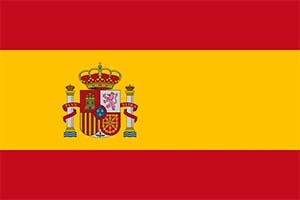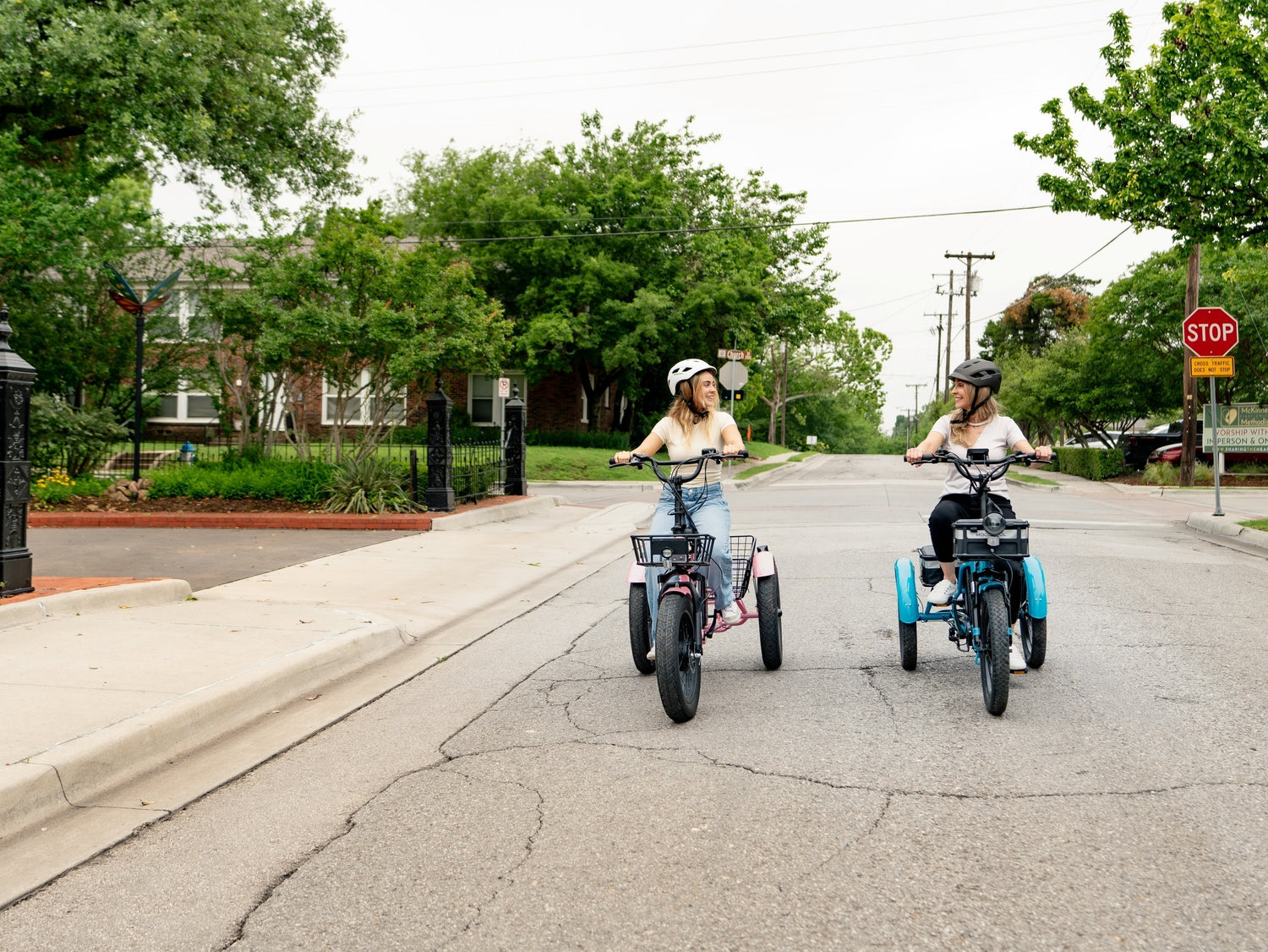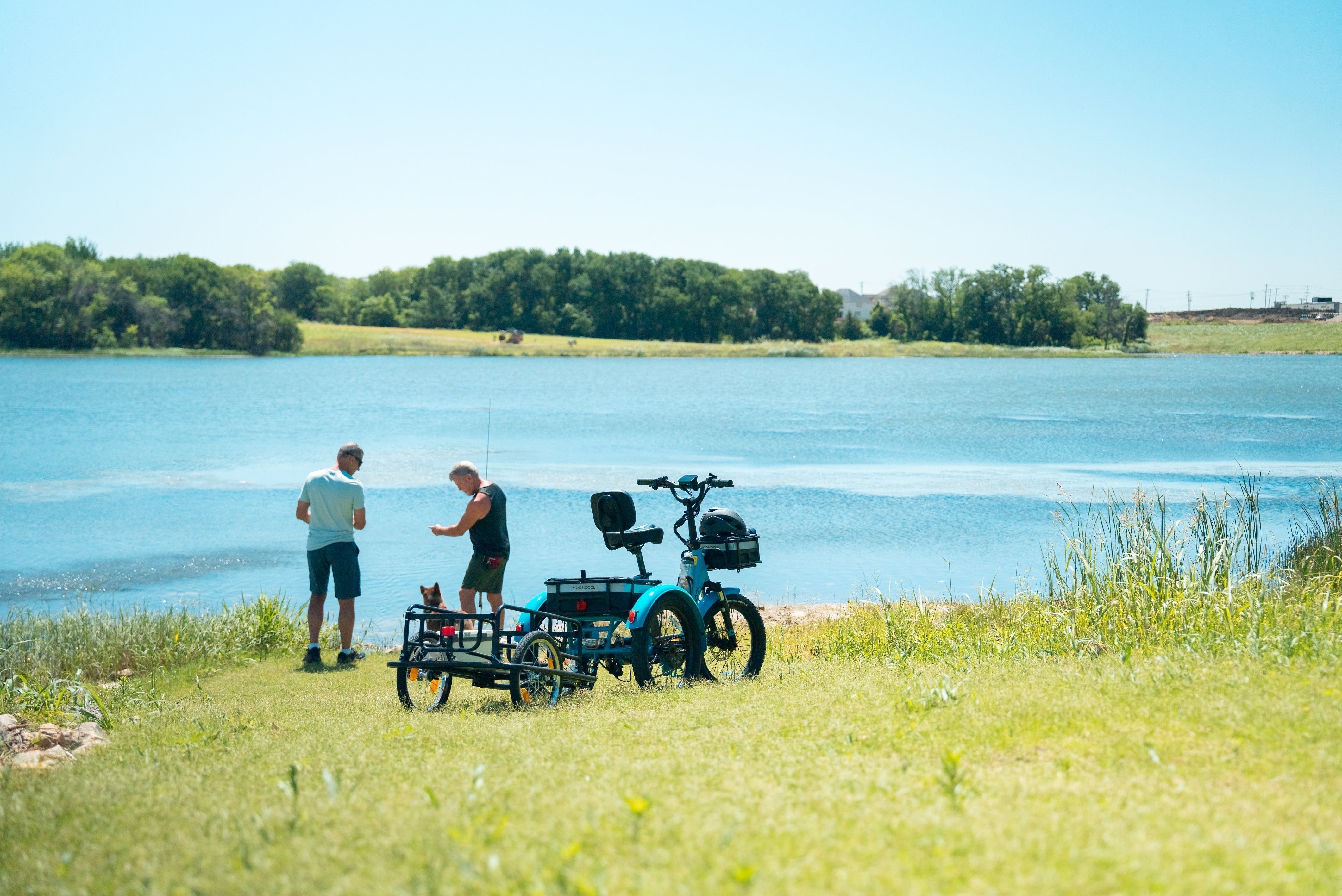Every electric trike rider, ranging from performance‑focused riders to curious first‑timers, wants clarity on what determines how fast an electric trike goes and how sharply it accelerates. There's not just one thing that governs how fast you can ride; there's a whole host of things. Electric trike performance factors, such as motor wattage, terrain, and rider weight, contribute to real-world speed. In this blog, we'll outline the key elements that affect electric trike speed and acceleration, so you understand what influences trike speed and acceleration.
1. Motor Power (Wattage)
The power of the motor is the single most direct influence on speed and acceleration. Most adult electric trikes are equipped with motors rated between 250W and 750W. A 250W motor is fine for flat, easy urban riding and complies with EU e‑bike regulations. It typically enables speeds of around 24–29 km/h (15–18 mph).
In the United States, Class 2 and Class 3 e‑bikes, which many electric trikes fall under, are allowed up to 750W of motor power, with a maximum assist speed of 20 mph for Class 2 (throttle or pedal assist) and 28 mph for Class 3 (pedal assist only). Electric trikes built to these standards are generally street-legal, provided they comply with local laws and do not require a license.
A 500W motor gives a practical mix of power and efficiency. Riders experience sharper acceleration and improved hill-climbing ability without severely draining battery life, and speeds can reach approximately 20 mph (32 km/h).
If you want strong everyday performance, you may prefer a trike with a 750W motor. At this level, you can typically reach 32–40 km/h (20–25 mph) on flat terrain, plus get reliable power over moderate gradients or when carrying heavier loads.
Some high-end models even offer 1,000W or dual-motor setups. For instance, a dual 750W trike might reach a top speed of 40 km/h (25 mph) and deliver torque exceeding 180 Nm. These are excellent for demanding terrain or high-load conditions. Still, they also weigh more and draw more current, and may exceed local limits in some U.S. states or parks.
2. Torque (Nm)
Torque measures the turning force, which directly impacts acceleration, especially when starting from a stop or on a hill. A trike with a high Nm torque rating, even with moderate wattage, can feel more responsive than one with higher wattage but lower torque.
Entry-level trikes might deliver 40–60 Nm, which is enough for gentle starts and light riders. Models geared to cargo or hilly use often exceed 75–100 Nm, which translates into stronger launches, smoother climbing, and better control under load.
3. Battery Voltage and Capacity
Higher-voltage batteries (e.g., 48V vs. 36V) provide more effective motor output. This is especially the case when the trike is under load, allowing it to maintain speed for longer before the battery runs out.
Amp‑hours (Ah) and watt‑hours (Wh) determine how long that performance lasts in a ride.
For example, a 48V 15Ah (≈720 Wh) battery enables sustained higher speeds and climbs. In contrast, a 36V 8Ah pack may support shorter rides and lower launch power, limiting speed on uphill terrain.
4. Rider Weight and Load
The combined weight of the rider, cargo, and the trike itself influences acceleration and top speed. Greater mass increases inertia and rolling resistance. Heavier setups require more power to maintain momentum, which slows down acceleration and reduces range and speed.
That means a trike with a light rider on a smooth road can easily reach top speeds. However, if you were to ride with a passenger or cargo, acceleration slows, top speed drops slightly, and the battery drains faster.

5. Terrain and Road Conditions
If you were running uphill or on rough terrain, you would quickly run out of energy. Well, electric trikes have the same issue, as terrain dramatically affects the amount of power required and the attainable speeds. If you were riding on a smooth, flat road, your motor would run at peak efficiency and easily reach advertised top speeds. Riding on gravel, grass, or uphill can reduce speed by 30 to 50 percent. A trike capable of 25 mph on pavement may only manage 16 to 18 mph on a 10 percent incline.
Tire type, tread, and pressure matter too. Fat tires give you lots of grip but slow acceleration and reduce maximum speed due to their increased rolling resistance. A lot of electric trikes have suspension components to smooth out the ride quality on rough surfaces. But unfortunately, suspension adds weight and reduces efficiency, slowing you down.
6. Assistance Modes and Throttle
Electric trikes with pedal assist levels let riders choose how much power they want to use from the motor. Lower pedal assist levels save energy but require you to put more effort into the pedals.
Some models feature throttle-only modes, allowing you to ride without pedaling. This feature is ideal for quick starts in traffic, hill launches, or those with limited mobility. For example, the Mooncool MC350 has a 350W motor and a 48V battery with both throttle and different levels of pedal assist.
If you're looking for stability and comfort in a full-size frame, the Mooncool TK1 series has a smooth ride quality with a responsive 500 W or 750 W rear hub motor. The wide step-through design makes it easy to mount, and the combination of throttle and pedal assist gives new riders a confident start. It's an excellent choice for everyday trips where comfort, balance, and steady acceleration are most important.

Legal Contexts: What You Should Know About Speed and Class Regulations
Understanding how electric trikes are regulated helps you ride confidently and avoid surprises. Laws vary by country and even by state or city, so it's worth knowing the basics.
United States
As mentioned earlier, in the U.S., most electric trikes are classified under the three-tier e-bike system adopted in many states:
• Class 1: Pedal-assist only, no throttle, with a top assisted speed of 20 mph
• Class 2: Pedal-assist and throttle-enabled, also capped at 20 mph
• Class 3: Pedal-assist only, but with a top assisted speed of 28 mph, and often not allowed on bike paths
Most Mooncool trikes, including the MC350 and TK1 series, are designed to align with Class 2 standards. They have both throttle and pedal assist up to 20 mph. That means they're street legal in most areas and don't require licensing or insurance. However, some states or municipalities may still restrict Class 2 or Class 3 trikes from bike paths, trails, or parks, so always check local guidelines.
European Union and United Kingdom
In the EU and UK, regulations are more uniform. Electric trikes are typically considered EPACs (Electric Pedal Assisted Cycles) when they:
• Have a motor rated at no more than 250W
• Assist only when pedaling
• Cut motor assistance at 25 km/h (15.5 mph)
Trikes exceeding these limits may be treated as mopeds or small motorcycles, which would require registration, helmets, and insurance. This is important for anyone importing or modifying a trike with higher wattage or throttle functionality.
Canada and Australia
In Canada, electric trikes are limited to 500W motors and a maximum speed of 32 km/h (20 mph), with some provinces enforcing additional licensing or helmet requirements.
In Australia, most states permit 250W for pedal-assist bikes and up to 500W for throttle-assisted bikes, with a speed limit of around 25 km/h (15.5 mph) unless reclassified.
Final Thoughts

Speed and acceleration in electric trikes depend on more than just motor wattage. Torque, battery voltage and capacity, rider and cargo weight, terrain, and whether you use throttle or pedal assist all make a difference to the ride.
For riders who carry lots of weight, value confident starts, solid hill performance, and speeds of around 40 km/h (25 mph), trikes with 750W motors and high torque are the best fit. Riders prioritizing battery life and light commuting may prefer 500W systems. Beginners or those with speed limitations should consider 250W configurations.
Above all, choose a trike that suits your needs, typical riding conditions, and load requirements. Mooncool trikes help you ride fearlessly and arrive safely, delivering a combination of performance, comfort, and control for all generations.
Check out the full range of Mooncool electric trikes and find one that matches your references.















Leave a Comment
This site is protected by hCaptcha and the hCaptcha Privacy Policy and Terms of Service apply.